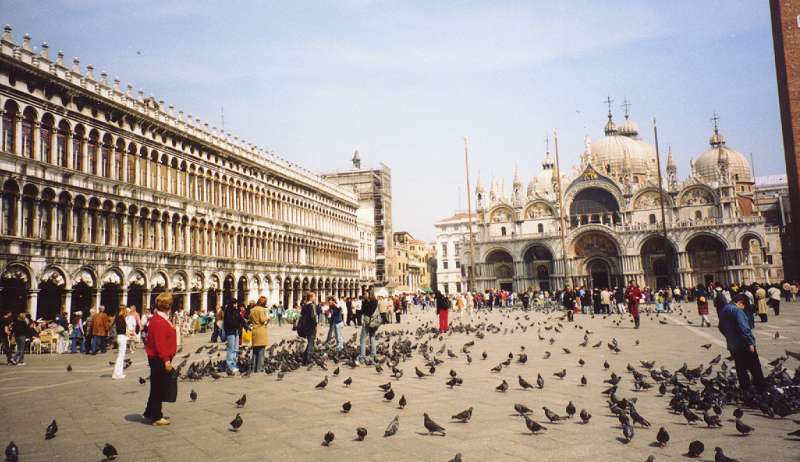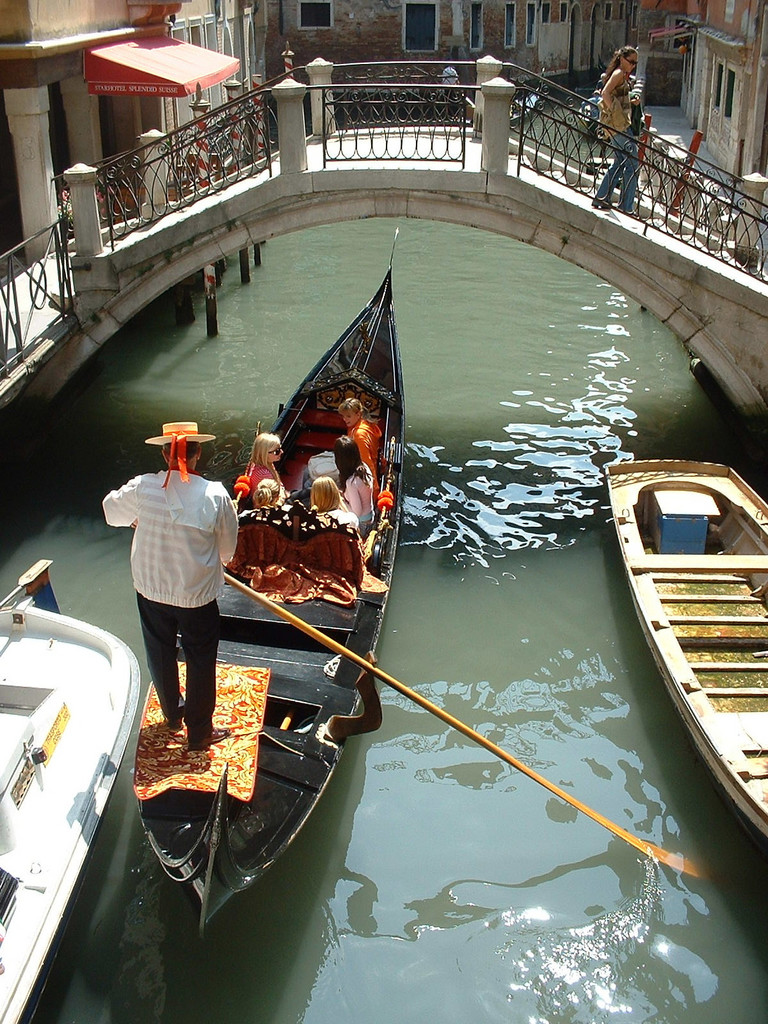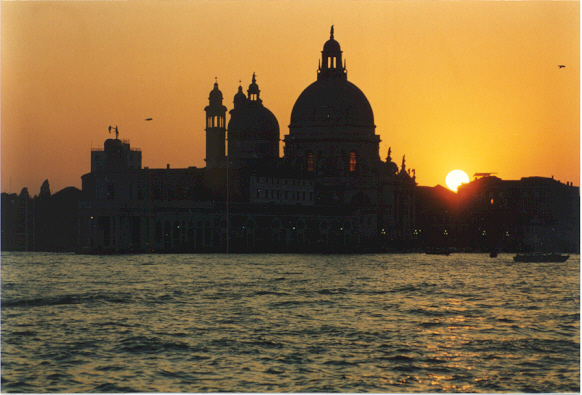 |
http://www.shejapan.com/ > World Heritages >Venice and Lagoon
Quiz:
|
|
|
|
2. What dose the Acqua alta mean?

Inscribed : 1987Criteria: C (i) (ii) (iii) (iv) (v) (vi)
Brief description:
Founded in the 5th century and spread over 118 small islands, Venice became a major maritime power in the 10th century. The whole city is an extraordinary architectural masterpiece in which even the smallest building contains works by some of the world's greatest artists such as Giorgione, Titian, Tintoretto, Veronese and others.
Venice and Lagoon (Venice and Lagoon Foundation)
 The classical Venetian boat is the gondola,
although it is now mostly used for tourists, or for weddings, funerals, or
other ceremonies, due to its cost. Most Venetians now travel by motorised
waterbuses ("vaporetti") which ply regular routes along the major canals
and between the city's islands. The city also has many private boats. The
only unmotorized gondolas still in common use by Venetians are the
traghetti, foot passenger ferries crossing the Grand Canal at certain
points without bridges. Venice is served by the newly rebuilt Marco Polo
International Airport, or Aeroporto di Venezia Marco Polo, named in honor
of its famous citizen. The airport is on the mainland and was rebuilt away
from the coast so that visitors now need to get a bus to the pier, from
which a water taxi or Aliliguna waterbus can be used.
The classical Venetian boat is the gondola,
although it is now mostly used for tourists, or for weddings, funerals, or
other ceremonies, due to its cost. Most Venetians now travel by motorised
waterbuses ("vaporetti") which ply regular routes along the major canals
and between the city's islands. The city also has many private boats. The
only unmotorized gondolas still in common use by Venetians are the
traghetti, foot passenger ferries crossing the Grand Canal at certain
points without bridges. Venice is served by the newly rebuilt Marco Polo
International Airport, or Aeroporto di Venezia Marco Polo, named in honor
of its famous citizen. The airport is on the mainland and was rebuilt away
from the coast so that visitors now need to get a bus to the pier, from
which a water taxi or Aliliguna waterbus can be used.
Sinking of Venice The buildings of Venice are constructed on closely spaced wood piles (under water, in the absence of oxygen, wood does not decay) which penetrate alternating layers of clay and sand. Most of these piles are still intact after centuries of submersion. The foundations rest on the piles, and buildings of brick or stone sit above these footings. The buildings are often threatened by flood tides pushing in from the Adriatic between autumn and early spring.
During the 20th century, when many artesian wells were sunk into the periphery of the lagoon to draw water for local industry, Venice began to subside. It was realised that extraction of the aquifer was the cause. This sinking process has slowed markedly since artesian wells were banned in the 1960s. However, the city is still threatened by more frequent low-level floods (so-called Acqua alta, "high water") that creep to a height of several centimeters over its quays, regularly following certain tides. In many old houses the former staircases used by people to unload goods are now flooded, rendering the former ground floor uninhabitable. Thus, many Venetians resorted to moving up to the upper floors and continue with their lives.
Some recent studies have suggested that the city is no longer sinking, but this is not yet certain; therefore, a state of alert has not been revoked. In May 2003, Silvio Berlusconi, the Italian Prime Minister, inaugurated the MOSE project, which will lay a series of 79 inflatable pontoons across the sea bed at the three entrances to the lagoon. When tides are predicted to rise above 110 centimetres, the pontoons will be filled with air and block the incoming water from the Adriatic sea. This challenging engineering work is due to be completed by 2011. To make things worse, however, sea levels are rising anyway, and in fact, the whole east coast of Italy is sinking (although very slowly). Some experts say that the best way to protect Venice is to physically lift the City to a greater height above sea level - by pumping water into the soil underneath the city. This way, some hope, it could rise above sea levels, protecting it for hundreds of years, and eventually the MOSE project may not be necessary (it will, controvertially, alter the tidal patterns in the lagoon, damaging some wildlife).

shallow
浅瀬
waterbus
水上バス
construct
貫く
absence
欠乏
clay
粘土
artesian wall
深堀井戸
extraction
抽出する
high water
高潮
sink
沈む
wikipedia
Unesco
Welcome to Venice
Oficcial site:
http://www.shejapan.com/ > World
Heritages >Venive and Lagoon
© 2006 SHEJapan.com